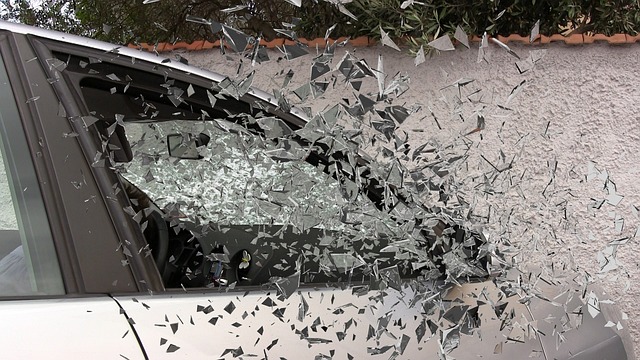Long-Term Disabilities: Navigating Defective Product Injury Impact and Compensation

A defective product injury can cause varying harm, from minor to life-altering, due to unsafe produc…….
Defective product injuries, a critical aspect of consumer safety, refer to harm caused by products that fail to meet expected standards or contain inherent defects. This phenomenon impacts individuals, businesses, and societies worldwide, underlining the necessity for comprehensive understanding and robust measures. In this article, we embark on an in-depth exploration of defective product injuries, unraveling their intricacies, global implications, and potential solutions. By delving into various facets, we aim to equip readers with valuable insights into this complex issue.
Definition: Defective product injury is a legal term encompassing physical or economic harm inflicted on consumers or users due to flaws or imperfections in a product. These defects can range from manufacturing errors, design failures, or the use of inferior materials, leading to unexpected consequences.
Core Components:
Product Defect: This could be a manufacturing glitch, a design oversight, or the presence of hazardous substances. For instance, a car with faulty brakes or a toy with sharp edges that can cause lacerations.
Harm or Injury: The impact resulting from the defect, which can manifest as physical injuries, property damage, or economic losses. A case in point is a recall of defective smartphones leading to data loss for consumers.
Causal Link: Establishing a direct relationship between the product defect and the ensuing harm is pivotal. Legal frameworks often require proof that the defect was a significant contributing factor to the injury.
Historical Context: The concept of defective product liability has evolved significantly over the past century. Early industrial accidents led to the emergence of strict liability laws, ensuring manufacturers could be held accountable for product defects. This evolution reflects society’s growing awareness of consumer safety and the need for proactive measures.
Defective product injuries transcend geographical boundaries, affecting consumers in developed and developing nations alike. Here’s a global snapshot:
North America: The United States and Canada have stringent product liability laws, fostering a culture of safety. However, the vast market size also means that defective products can impact a significant number of consumers.
Europe: The European Union’s comprehensive product safety regulations set high standards for manufacturers across industries. The EU’s rapid recall system ensures swift action when defects are identified.
Asia Pacific: Rapidly growing economies like China and India face unique challenges, including stringent quality control measures and a vast consumer base. Recent years have seen increased focus on product safety, leading to more robust regulatory frameworks.
Developing Nations: In many African and South American countries, defective product injuries are a significant concern due to less stringent regulations and limited consumer protection. However, these regions are witnessing growing advocacy for better product safety standards.
The economic implications of defective product injuries are far-reaching, influencing various sectors:
| Sector | Impact |
|---|---|
| Manufacturing | Recalls and lawsuits can result in substantial financial losses, affecting profitability and market reputation. |
| Retail and E-commerce | Businesses face increased operational costs due to returns, exchanges, and potential legal fees. |
| Insurance | Claims related to defective products contribute to higher insurance premiums for manufacturers and retailers. |
| Consumer Spending | Injuries or losses incurred by consumers can lead to reduced consumer confidence and spending in affected sectors. |
Technology plays a pivotal role in addressing defective product injuries:
Advanced Testing Methods: Modern testing technologies, such as 3D printing and simulation software, enable more precise product testing, identifying potential defects before market release.
Internet of Things (IoT): IoT devices, when integrated with safety protocols, can provide real-time monitoring and alerts for potential hazards, enhancing product safety.
Blockchain: This technology offers transparent supply chain management, allowing for better tracking of products and identification of sources of defects.
Artificial Intelligence (AI): AI algorithms can analyze vast datasets to predict potential product failures, enabling proactive safety measures.
Governments worldwide have implemented policies and regulations to mitigate defective product injuries:
U.S. Consumer Product Safety Commission (CPSC): Established in 1973, the CPSC is responsible for protecting consumers from unsafe products, conducting tests, and issuing recalls.
European Union’s General Product Safety Directive: This directive sets out essential requirements for ensuring product safety throughout the EU market.
China’s Product Quality Law: Enacted in 2010, this law establishes a comprehensive legal framework for product quality supervision, inspection, and product liability.
International Organization for Standardization (ISO): ISO develops international standards for product safety, quality, and performance, guiding manufacturers worldwide.
Despite robust regulatory frameworks, several challenges persist:
Enforcement and Compliance: Ensuring strict adherence to safety standards across industries and jurisdictions remains a challenge.
Rapid Technological Change: Keeping up with rapidly evolving technologies and their potential defects is an ongoing struggle for regulators.
Cost of Recalls: The economic burden of product recalls on manufacturers can be significant, potentially deterring some from implementing stringent safety measures.
Proposed Solutions:
Enhanced International Cooperation: Harmonizing regulations and sharing best practices globally can improve product safety across borders.
Stricter Enforcement: Increased penalties for non-compliance may encourage manufacturers to prioritize product safety.
Industry Collaboration: Public-private partnerships can foster innovation in product safety technologies and data-sharing initiatives.
Toyota Motor Corporation implemented a comprehensive vehicle safety system, incorporating advanced airbag technology, pre-collision systems, and lane departure warnings. This proactive approach significantly reduced severe injuries and fatalities in road accidents, setting a global standard for automotive safety.
Apple’s decision to redesign its battery management system in response to the Galaxy Note 7 battery explosion incident demonstrated the power of proactive safety measures. By prioritizing user safety, Apple avoided a potential crisis and enhanced its brand reputation.
In response to a potential defect in some of its baby powder products linked to cancer concerns, Johnson & Johnson initiated a voluntary recall. This swift action demonstrated the company’s commitment to consumer safety, even amidst legal challenges and public scrutiny.
The future landscape of defective product injury prevention is promising, shaped by several emerging trends:
Data Analytics: Advanced data analytics will enable predictive modeling, helping identify potential defects before they cause harm.
Digital Twin Technology: Creating digital replicas of physical products can facilitate virtual testing and simulation, reducing the need for costly physical prototypes.
Circular Economy Focus: The shift towards sustainability may lead to increased emphasis on product durability, longevity, and recycling, reducing defect-related risks.
Global Harmonization: Efforts to align product safety standards globally will foster safer products for international consumers.
Defective product injuries represent a complex challenge that demands multifaceted solutions. As our world becomes increasingly interconnected and technology advances, the need for robust product safety measures has never been more critical. Through global cooperation, technological innovation, and stringent regulations, we can protect consumers, foster trust in products, and ensure a safer future.
Q: How do I know if a product is defective?
A: A defective product exhibits a flaw or deviation from its intended design or performance, causing harm or creating a potential safety risk. Defects can be manufacturing errors, design failures, or the use of hazardous materials.
Q: What should I do if I suspect a product is defective?
A: If you suspect a product defect, document the issue, including photos and detailed descriptions. Contact the manufacturer or retailer for resolution, and consider reporting it to the relevant regulatory body in your region.
Q: Are all product recalls due to defects?
A: While many recalls are initiated due to defects, they can also be prompted by changes in regulations, manufacturing improvements, or even changes in intended use, ensuring consumer safety is paramount.
Q: How do global standards benefit consumers?
A: Global product safety standards ensure that products sold worldwide meet consistent quality and safety criteria. This harmony protects consumers across borders and fosters trust in international trade.
Q: Can technology alone prevent defective product injuries?
A: Technology plays a crucial role, but it is not a sole solution. Effective prevention requires a combination of advanced testing, stringent regulations, industry collaboration, and consumer awareness.

A defective product injury can cause varying harm, from minor to life-altering, due to unsafe produc…….

Defective product injury claims arise when unsafe or flawed products cause harm. Manufacturers and r…….

Defective product injury encompasses harm caused by flawed or unsafe products, ranging from minor to…….

Defective products can cause significant harm, leading to legal claims for compensation. Individuals…….

Defective product injuries can cause significant harm, with widespread consequences including medica…….

Warnings are critical safety features on consumer products, preventing defects that could cause inju…….

Defective products pose growing risks, causing a range of injuries from minor to severe disabilities…….

Defective product liability laws hold manufacturers and sellers accountable for harm caused by unsaf…….

Time limits, or statutes of limitations, vary by jurisdiction (1-several years) in defective product…….

Understanding your legal rights is crucial after a defective product injury, where you might be enti…….